Visit to download the full and correct content document: https://ebookmass.com/product/profit-maximization-techniques-for-operating-chemica l-plants-1-edition-sandip-k-lahiri/
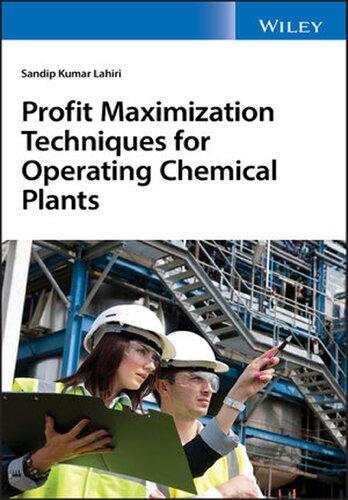
More products digital (pdf, epub, mobi) instant download maybe you interests ...

Handbook for Process Safety in Laboratories and Pilot Plants: A Risk■based Approach Ccps (Center For Chemical Process Safety)
https://ebookmass.com/product/handbook-for-process-safety-inlaboratories-and-pilot-plants-a-risk%e2%80%90based-approach-ccpscenter-for-chemical-process-safety/

Understanding Operating Systems 8th Edition
https://ebookmass.com/product/understanding-operatingsystems-8th-edition/
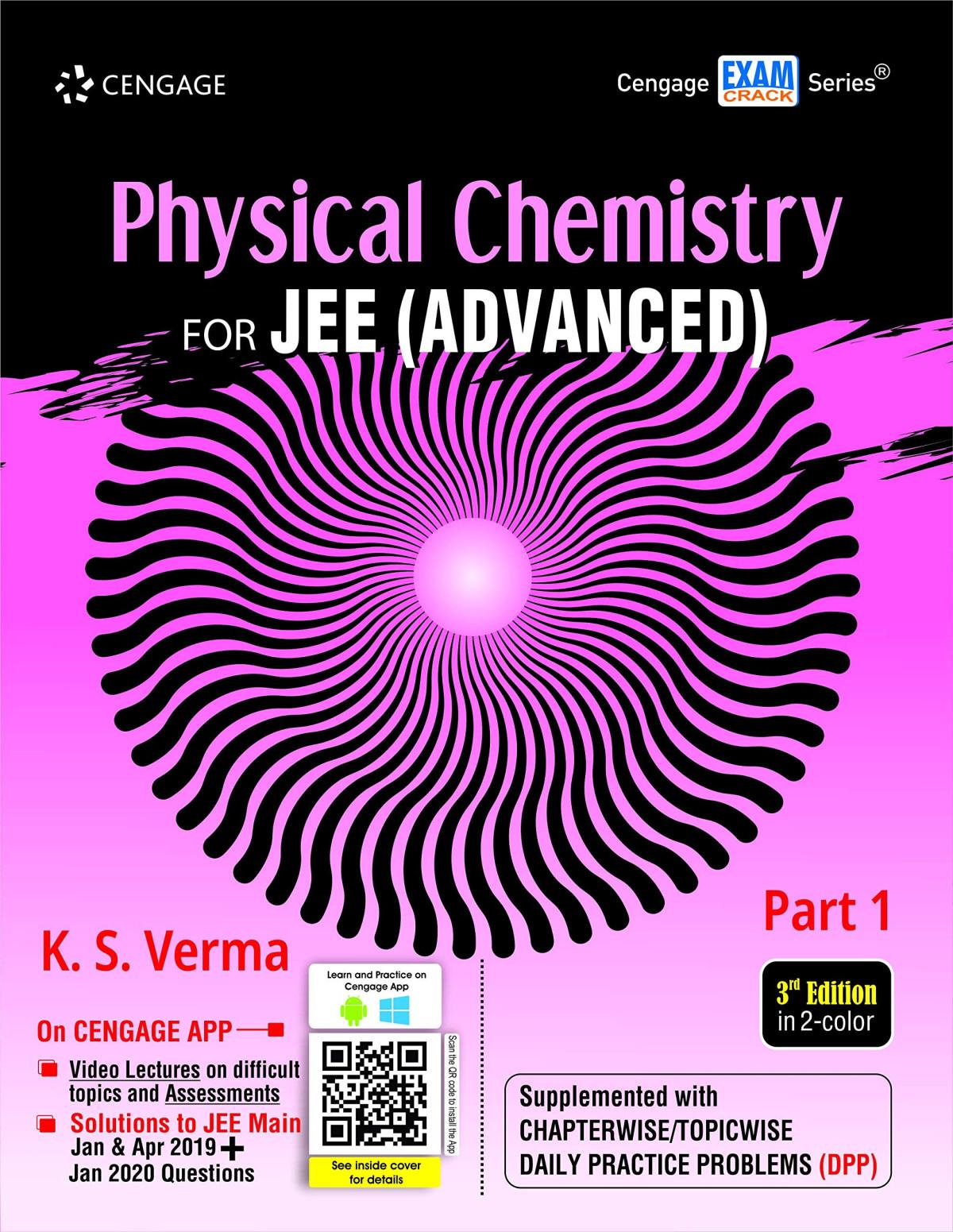
Physical Chemistry for JEE (Advanced): Part 1, 3rd edition K. S. Verma
https://ebookmass.com/product/physical-chemistry-for-jeeadvanced-part-1-3rd-edition-k-s-verma/
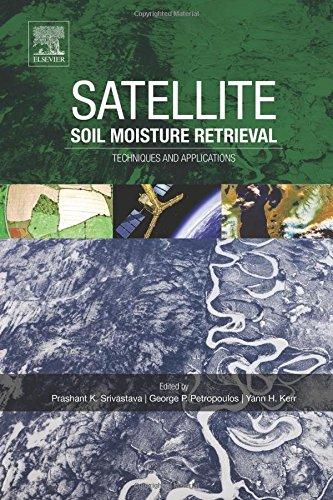
Satellite Soil Moisture Retrieval. Techniques and Applications 1st Edition Prashant K Srivastava
https://ebookmass.com/product/satellite-soil-moisture-retrievaltechniques-and-applications-1st-edition-prashant-k-srivastava/

Hello Korean — Volume 1 : The Language Study Guide for K-Pop & K-Drama Fans Jiyoung Park
https://ebookmass.com/product/hello-korean-volume-1-the-languagestudy-guide-for-k-pop-k-drama-fans-jiyoung-park/
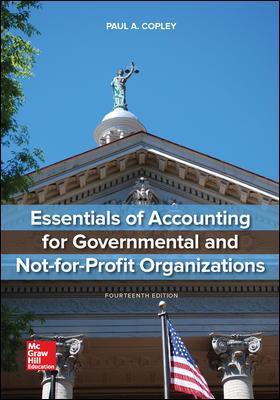
(eBook PDF) Essentials of Accounting for Governmental and Not-for-Profit Organizations 14th Edition
https://ebookmass.com/product/ebook-pdf-essentials-of-accountingfor-governmental-and-not-for-profit-organizations-14th-edition/

Operating System Forensics 1st Edition Messier
https://ebookmass.com/product/operating-system-forensics-1stedition-messier/

Inorganic Chemistry for JEE (Advanced): Part 1, 3rd edition DPP K. S. Verma
https://ebookmass.com/product/inorganic-chemistry-for-jeeadvanced-part-1-3rd-edition-dpp-k-s-verma/
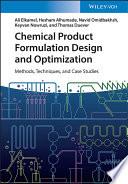
Chemical Product Formulation Design and Optimization: Methods, Techniques, and Case Studies Ali Elkamel
https://ebookmass.com/product/chemical-product-formulationdesign-and-optimization-methods-techniques-and-case-studies-alielkamel/

ProfitMaximizationTechniquesforOperatingChemicalPlants
ProfitMaximizationTechniquesforOperating ChemicalPlants
SandipKumarLahiri
NationalInstituteOfTechnology,Durgapur,India
Thiseditionfirstpublished2020
©2020JohnWiley&SonsLtd
Allrightsreserved.Nopartofthispublicationmaybereproduced,storedinaretrievalsystem,ortransmitted,inanyform orbyanymeans,electronic,mechanical,photocopying,recordingorotherwise,exceptaspermittedbylaw.Adviceonhow toobtainpermissiontoreusematerialfromthistitleisavailableathttp://www.wiley.com/go/permissions.
TherightofSandipKumarLahiritobeidentifiedastheauthorofthisworkhasbeenassertedinaccordancewithlaw.
RegisteredOffices
JohnWiley&Sons,Inc.,111RiverStreet,Hoboken,NJ07030,USA
JohnWiley&SonsLtd,TheAtrium,SouthernGate,Chichester,WestSussex,PO198SQ,UK
EditorialOffice
JohnWiley&SonsLtd,TheAtrium,SouthernGate,Chichester,WestSussex,PO198SQ,UK
Fordetailsofourglobaleditorialoffices,customerservices,andmoreinformationaboutWileyproductsvisitusatwww .wiley.com.
Wileyalsopublishesitsbooksinavarietyofelectronicformatsandbyprint-on-demand.Somecontentthatappearsin standardprintversionsofthisbookmaynotbeavailableinotherformats.
LimitofLiability/DisclaimerofWarranty
Inviewofongoingresearch,equipmentmodifications,changesingovernmentalregulations,andtheconstantflowof informationrelatingtotheuseofexperimentalreagents,equipment,anddevices,thereaderisurgedtoreviewandevaluate theinformationprovidedinthepackageinsertorinstructionsforeachchemical,pieceofequipment,reagent,ordevicefor, amongotherthings,anychangesintheinstructionsorindicationofusageandforaddedwarningsandprecautions.While thepublisherandauthorshaveusedtheirbesteffortsinpreparingthiswork,theymakenorepresentationsorwarranties withrespecttotheaccuracyorcompletenessofthecontentsofthisworkandspecificallydisclaimallwarranties,including withoutlimitationanyimpliedwarrantiesofmerchantabilityorfitnessforaparticularpurpose.Nowarrantymaybecreated orextendedbysalesrepresentatives,writtensalesmaterialsorpromotionalstatementsforthiswork.Thefactthatan organization,website,orproductisreferredtointhisworkasacitationand/orpotentialsourceoffurtherinformationdoes notmeanthatthepublisherandauthorsendorsetheinformationorservicestheorganization,website,orproductmay provideorrecommendationsitmaymake.Thisworkissoldwiththeunderstandingthatthepublisherisnotengagedin renderingprofessionalservices.Theadviceandstrategiescontainedhereinmaynotbesuitableforyoursituation.You shouldconsultwithaspecialistwhereappropriate.Further,readersshouldbeawarethatwebsiteslistedinthisworkmay havechangedordisappearedbetweenwhenthisworkwaswrittenandwhenitisread.Neitherthepublishernorauthors shallbeliableforanylossofprofitoranyothercommercialdamages,includingbutnotlimitedtospecial,incidental, consequential,orotherdamages.
LibraryofCongressCataloging-in-PublicationData
Names:Lahiri,SandipKumar,1970-author.
Title:Profitmaximizationtechniquesforoperatingchemicalplants/Dr SandipKumarLahiri.
Description:Firstedition.|Hoboken,NJ:JohnWiley&Sons,Inc.,2020. |Includesbibliographicalreferencesandindex.
Identifiers:LCCN2019058766(print)|LCCN2019058767(ebook)|ISBN 9781119532156(hardback)|ISBN9781119532217(adobepdf)|ISBN 9781119532170(epub)
Subjects:LCSH:Chemicalengineering–Costeffectiveness.|Engineering economy.|Profit.
Classification:LCCTP155.2.C67L342020(print)|LCCTP155.2.C67 (ebook)|DDC660.068/1–dc23
LCrecordavailableathttps://lccn.loc.gov/2019058766
LCebookrecordavailableathttps://lccn.loc.gov/2019058767
CoverDesign:Wiley
CoverImages:©DavidBurton/GettyImages,©Lightspring/Shutterstock
Setin10/12ptWarnockProbySPiGlobal,Chennai,India
PrintedandboundbyCPIGroup(UK)Ltd,Croydon,CR04YY
10987654321
DedicatedtomyParents,wifeJiniaandtwolovelychildrenSuchetonaandSrijon
Contents
FigureList xix
TableList xxv
Preface xxvii
1ConceptofProfitMaximization 1
1.1Introduction 1
1.2WhoisThisBookWrittenfor? 3
1.3WhatisProfitMaximizationandSweatingofAssetsAllAbout? 4
1.4NeedforProfitMaximizationinToday’sCompetitiveMarket 7
1.5DataRichbutInformationPoorStatusofToday’sProcessIndustries 8
1.6EmergenceofKnowledge-BasedIndustries 9
1.7HowKnowledgeandDataCanBeUsedtoMaximizeProfit 9 References 10
2BigPictureoftheModernChemicalIndustry 11
2.1NewEraoftheChemicalIndustry 11
2.2TransitionfromaConventionaltoanIntelligentChemicalIndustry 11
2.3HowWillDigitalAffecttheChemicalIndustryandWhereCantheBiggest ImpactBeExpected? 12
2.3.1AttainingaNewLevelofFunctionalExcellence 12
2.3.1.1Manufacturing 13
2.3.1.2SupplyChain 14
2.3.1.3SalesandMarketing 14
2.3.1.4ResearchandDevelopment 15
2.4UsingAdvancedAnalyticstoBoostProductivityandProfitabilityin ChemicalManufacturing 15
2.4.1DecreasingDowntimeThroughAnalytics 16
2.4.2IncreaseProfitswithLessResources 17
2.4.3OptimizingtheWholeProductionProcess 18
2.5AchievingBusinessImpactwithData 19
2.5.1Data’sExponentialGrowingImportanceinValueCreation 19
2.5.2DifferentLinksintheValueChain 20
2.5.2.1TheInsightsValueChain–DefinitionsandConsiderations 21
2.6FromDullDatatoCriticalBusinessInsights:TheUpstreamProcesses 22
2.6.1GeneratingandCollectingRelevantData 22
2.6.2DataRefinementisaTwo-StepIteration 23
2.7FromValuableDataAnalyticsResultstoAchievingBusinessImpact:The DownstreamActivities 25
2.7.1TurningInsightsintoAction 25
2.7.2DevelopingDataCulture 25
2.7.3MasteringTasksConcerningTechnologyandInfrastructureasWellas OrganizationandGovernance 25 References 26
3ProfitMaximizationProject(PMP)ImplementationSteps 27
3.1ImplementingaProfitMaximizationProject(PMP) 27
3.1.1Step1:MappingtheWholePlantinMonetaryTerms 27
3.1.2Step2:AssessmentofCurrentPlantConditions 27
3.1.3Step3:AssessmentoftheBaseControlLayerofthePlant 28
3.1.4Step4:AssessmentofLossfromthePlant 29
3.1.5Step5:IdentificationofImprovementOpportunityinPlantandFunctional DesignofPMPApplications 29
3.1.6Step6:DevelopanAdvanceProcessMonitoringFrameworkbyApplying theLatestDataAnalyticsTools 30
3.1.7Step7:DevelopaReal-TimeFaultDiagnosisSystem 30
3.1.8Step8:PerformaMaximumCapacityTestRun 30
3.1.9Step9:DevelopandImplementReal-TimeAPC 31
3.1.10Step10:DevelopaData-DrivenOfflineProcessModelforCriticalProcess Equipment 31
3.1.11Step11:OptimizingProcessOperationwithaDevelopedModel 32
3.1.12Step12:ModelingandOptimizationofIndustrialReactors 32
3.1.13Step13:MaximizeThroughputofAllRunningDistillationColumns 33
3.1.14Step14:ApplyNewDesignMethodologyforProcessEquipment 33 References 34
4StrategyforProfitMaximization 35
4.1Introduction 35
4.2HowisOperatingProfitDefinedinCPI? 36
4.3DifferentWaystoMaximizeOperatingProfit 36
4.4ProcessCostIntensity 37
4.4.1DefinitionofProcessCostIntensity 37
4.4.2ConceptofCostEquivalent(CE) 39
4.4.3CostIntensityforaTotalSite 39
4.5MappingtheWholeProcessinMonetaryTermsandGainInsights 40
4.6CaseStudyofaGlycolPlant 40
4.7StepstoMaptheWholePlantinMonetaryTermsandGainInsights 43
4.7.1Step1:VisualizethePlantasaBlackBox 43
4.7.2Step2:DataCollectionfromaDataHistorianandPreparationofCost Data 46
4.7.3Step3:CalculationofProfitMargin 46
4.7.4Step4:GainInsightsfromPlantCostandProfitData 48
4.7.5Step5:GenerationofProductionCostandaProfitMarginTableforOne FullYear 51
4.7.6Step6:PlotProductionCostandProfitMarginforOneFullYearandGain Insights 51
4.7.7Step7:CalculationofRelativeStandardDeviationsofeachParameterin ordertoUnderstandtheCauseofVariability 52
4.7.8Step8:CostBenchmarking 53 Reference 54
5KeyPerformanceIndicatorsandTargets 55
5.1Introduction 55
5.2KeyIndicatorsRepresentOperationOpportunities 56
5.2.1ReactionOptimization 56
5.2.2HeatExchangerOperationOptimization 58
5.2.3FurnaceOperation 58
5.2.4RotatingEquipmentOperation 59
5.2.5MinimizingSteamLetdownFlows 59
5.2.6TurndownOperation 59
5.2.7HousekeepingAspects 59
5.3DefineKeyIndicators 60
5.3.1ProcessAnalysisandEconomicsAnalysis 61
5.3.2UnderstandtheConstraints 61
5.3.3IdentifyQualitativelyPotentialAreaofOpportunities 65
5.4CaseStudyofEthyleneGlycolPlanttoIdentifytheKeyPerformance Indicator 66
5.4.1Methodology 66
5.4.2EthyleneOxideReactionSection 67
5.4.2.1UnderstandtheProcess 67
5.4.2.2UnderstandingtheEconomicsoftheProcess 68
5.4.2.3FactorsthatcanChangetheProductionCostandOverallProfitGenerated fromthisSection 69
5.4.2.4HowisProductionCostRelatedtoProcessParametersfromtheStandpoint oftheCauseandEffectRelationship? 69
5.4.2.5Constraints 69
5.4.2.6KeyParameterIdentifications 70
5.4.3CycleWaterSystem 71
5.4.3.1MainPurpose 71
5.4.3.2EconomicsoftheProcess 71
5.4.3.3FactorsthatcanChangetheProductionCostofthisSection 72
5.4.3.4Constraints 72
5.4.3.5KeyPerformanceParameters 72
5.4.4CarbonDioxideRemovalSection 73
5.4.4.1MainPurpose 73
5.4.4.2Economics 73
5.4.4.3FactorsthatcanChangetheProductionCostofthisSection 73
x Contents
5.4.4.4Constraints 74
5.4.4.5KeyPerformanceParameters 74
5.4.5EGReactionandEvaporationSection 74
5.4.5.1MainPurpose 74
5.4.5.2Economics 75
5.4.5.3FactorsthatcanChangetheProductionCostofthisSection 76
5.4.5.4KeyPerformanceParameters 76
5.4.6EGPurificationSection 76
5.4.6.1MainPurpose 76
5.4.6.2Economics 77
5.4.6.3KeyPerformanceParameters 77
5.5PurposetoDevelopKeyIndicators 77
5.6SetupTargetsforKeyIndicators 78
5.7CostandProfitDashboard 78
5.7.1DevelopmentofCostandProfitDashboardtoMonitortheProcess PerformanceinMoneyTerms 78
5.7.2ConnectingKeyPerformanceIndicatorsinAPC 79
5.8ItisCrucialtoChangetheViewpointsinTermsofCostorProfit 80 References 80
6AssessmentofCurrentPlantStatus 83
6.1Introduction 83
6.1.1DataExtractionfromaDataHistorian 83
6.1.2CalculatetheEconomicPerformanceoftheSection 84
6.2MonitoringVariationsofEconomicProcessParameters 90
6.3DeterminationoftheEffectofAtmosphereonthePlantProfitability 90
6.4CapacityVariations 91
6.5AssessmentofPlantReliability 91
6.6AssessmentofProfitSuckersandIdentificationofEquipmentforModeling andOptimization 91
6.7AssessmentofProcessParametersHavingaHighImpactonProfit 93
6.8ComparisonofCurrentPlantPerformanceAgainstItsDesign 93
6.9AssessmentofRegulatoryControlSystemPerformance 94
6.9.1BasicAssessmentProcedure 96
6.10AssessmentofAdvanceProcessControlSystemPerformance 97
6.11AssessmentofVariousProfitImprovementOpportunities 97 References 98
7ProcessModelingbytheArtificialNeuralNetwork 99
7.1Introduction 99
7.2ProblemstoDevelopaPhenomenologicalModelforIndustrial Processes 100
7.3TypesofProcessModel 101
7.3.1FirstPrinciple-BasedModel 101
7.3.2Data-DrivenModels 101
7.3.3GreyModel 101
7.3.4HybridModel 101
7.4EmergenceofArtificialNeuralNetworksasOneofthePromising Data-DrivenModelingTechniques 106
7.5ANN-BasedModeling 106
7.5.1HowDoesANNWork? 106
7.5.2NetworkArchitecture 107
7.5.3Back-PropagationAlgorithm(BPA) 107
7.5.4Training 108
7.5.5Generalizability 110
7.6ModelDevelopmentMethodology 110
7.6.1DataCollectionandDataInspection 110
7.6.2DataPre-processingandDataConditioning 110
7.6.2.1OutlierDetectionandReplacement 112
7.6.2.2UnivariateApproachtoDetectOutliers 112
7.6.2.3MultivariateApproachtoDetectOutliers 112
7.6.3SelectionofRelevantInput–OutputVariables 113
7.6.4AlignData 113
7.6.5ModelParameterSelection,Training,andValidation 113
7.6.6ModelAcceptanceandModelTuning 115
7.7ApplicationofANNModelingTechniquesintheChemicalProcess Industry 115
7.8CaseStudy:ApplicationoftheANNModelingTechniquetoDevelopan IndustrialEthyleneOxideReactorModel 116
7.8.1OriginofthePresentCaseStudy 116
7.8.2ProblemDefinitionofthePresentCaseStudy 117
7.8.3DevelopingtheANN-BasedReactorModel 119
7.8.4IdentifyingInputandOutputParameters 119
7.8.5DataCollection 120
7.8.6NeuralRegression 121
7.8.7ResultsandDiscussions 122
7.9MatlabCodetoGeneratetheBestANNModel 124 References 125
8OptimizationofIndustrialProcessesandProcessEquipment 131
8.1MeaningofOptimizationinanIndustrialContext 131
8.2HowCanOptimizationIncreaseProfit? 132
8.3TypesofOptimization 133
8.3.1Steady-StateOptimization 133
8.3.2DynamicOptimization 133
8.4DifferentMethodsofOptimization 134
8.4.1ClassicalMethod 134
8.4.2Gradient-BasedMethodsofOptimization 134
8.4.3Non-traditionalOptimizationTechniques 135
8.5BriefHistoricalPerspectiveofHeuristic-basedNon-traditional OptimizationTechniques 136
8.6GeneticAlgorithm 138
8.6.1WhatisGeneticAlgorithm? 138
8.6.2FoundationofGeneticAlgorithms 138
8.6.3FivePhasesofGeneticAlgorithms 140
8.6.3.1InitialPopulation 140
8.6.3.2FitnessFunction 140
8.6.3.3Selection 140
8.6.3.4Crossover 140
8.6.3.5Termination 141
8.6.4TheProblemDefinition 141
8.6.5CalculationStepsofGA 141
8.6.5.1Step1:GeneratingInitialPopulationbyCreatingBinaryCoding 141
8.6.5.2Step2:EvaluationofFitness 142
8.6.5.3Step3:SelectingtheNextGeneration’sPopulation 142
8.6.6AdvantagesofGAAgainstClassicalOptimizationTechniques 144
8.7DifferentialEvolution 145
8.7.1WhatisDifferentialEvolution(DE)? 145
8.7.2WorkingPrincipleofDE 145
8.7.3CalculationStepsPerformedinDE 145
8.7.4ChoiceofDEKeyParameters(NP, F ,andCR) 145
8.7.5StepwiseCalculationProcedureforDEimplementation 146
8.8SimulatedAnnealing 149
8.8.1WhatisSimulatedAnnealing? 149
8.8.2Procedure 149
8.8.3Algorithm 150
8.9CaseStudy:ApplicationoftheGeneticAlgorithmTechniquetoOptimize theIndustrialEthyleneOxideReactor 151
8.9.1ConclusionoftheCaseStudy 152
8.10StrategytoUtilizeData-DrivenModelingandOptimizationTechniquesto SolveVariousIndustrialProblemsandIncreaseProfit 153 References 155
9ProcessMonitoring 159
9.1NeedforAdvanceProcessMonitoring 159
9.2CurrentApproachestoProcessMonitoringandDiagnosis 160
9.3DevelopmentofanOnlineIntelligentMonitoringSystem 161
9.4DevelopmentofKPI-BasedProcessMonitoring 161
9.5DevelopmentofaCauseandEffect-BasedMonitoringSystem 163
9.6DevelopmentofPotentialOpportunity-BasedDashBoard 163
9.6.1DevelopmentofLossandWasteMonitoringSystems 164
9.6.2DevelopmentofaCost-BasedMonitoringSystem 165
9.6.3DevelopmentofaConstraints-BasedMonitoringSystem 166
9.7DevelopmentofBusinessIntelligentDashboards 166
9.8DevelopmentofProcessMonitoringSystemBasedonPrincipalComponent Analysis 167
9.8.1WhatisaPrincipalComponentAnalysis? 168
9.8.2WhyDoWeNeedtoRotatetheData? 169
9.8.3HowDoWeGeneratePrincipalComponents? 170
9.8.4StepstoCalculatingthePrincipalComponents 170
9.9CaseStudyforOperationalStateIdentificationandMonitoringUsing PCA 171
9.9.1CaseStudy1:MonitoringaReciprocatingReclaimCompressor 171 References 174
10FaultDiagnosis 177
10.1ChallengestotheChemicalIndustry 177
10.2WhatisFaultDiagnosis? 178
10.3BenefitofaFaultDiagnosisSystem 179
10.3.1CharacteristicofanAutomatedFaultDiagnosisSystem 180
10.4DecreasingDowntimeThroughaFaultDiagnosisTypeDataAnalytics 180
10.5UserPerspectivetoMakeanEffectiveFaultDiagnosisSystem 181
10.6HowAreFaultDiagnosisSystemsMade? 183
10.6.1PrincipalComponent-BasedApproach 184
10.6.2ArtificialNeuralNetwork-BasedApproach 184
10.7ACaseStudytoBuildaRobustFaultDiagnosisSystem 185
10.7.1ChallengestoaBuildFaultDiagnosisofanEthyleneOxideReactor System 187
10.7.2PCA-BasedFaultDiagnosisofanEOReactorSystem 187
10.7.3AcquiringHistoricProcessDataSetstoBuildaPCAModel 188
10.7.4CriteriaofSelectionofInputParametersforPCA 189
10.7.5HowPCAInputDataisCapturedinRealTime 191
10.7.6BuildingtheModel 192
10.7.6.1CalculationsofthePrincipalComponents 192
10.7.6.2CalculationsofHotelling’s T 2 192
10.7.6.3CalculationsoftheResidual 193
10.7.7CreationofaPCAPlotforTrainingData 193
10.7.8CreationofHotelling’s T 2 PlotfortheTrainingData 194
10.7.9CreationofaResidualPlotfortheTrainingData 194
10.7.10CreationofanAbnormalZoneinthePCAPlot 194
10.7.11ImplementingthePCAModelinRealTime 194
10.7.12DetectingWhetherthePlantisRunningNormallyorAbnormallyona Real-TimeBasis 195
10.7.13UseofaPCAPlotDuringCorrectiveActioninRealTime 197
10.7.14ValidityofaPCAModel 198
10.7.14.1Time-VaryingCharacteristicofanEOCatalyst 198
10.7.14.2CapturingtheEfficiencyofthePCAModelUsingtheResidualPlot 199
10.7.15QuantitiveDecisionCriteriaImplementedforRetrainingofanEthylene Oxide(EO)ReactorPCAModel 200
10.7.16HowRetrainingisPracticallyExecuted 200
10.8BuildinganANNModelforFaultDiagnosisofanEOReactor 200
10.8.1AcquiringHistoricProcessDataSetstoBuildanANNModel 200
10.8.2IdentificationofInputandOutputParameters 201
10.8.3BuildingofanANN-BasedEOReactorModel 201
10.8.3.1ComplexityofEOReactorModeling 201
10.8.3.2ModelBuilding 202
10.8.4PredictionPerformanceofanANNModel 203
10.8.5UtilizationofanANNModelforFaultDetection 203
10.8.6HowDoPCAInputDataRelatetoANNInput/OutputData? 204
10.8.7RetrainingofanANNModel 206
10.9IntegratedRobustFaultDiagnosisSystem 206
10.10AdvantagesofaFaultDiagnosisSystem 208
References 208
11OptimizationofanExistingDistillationColumn 209
11.1StrategytoOptimizetheRunningDistillationColumn 209
11.1.1Strategy 209
11.2IncreasetheCapacityofaRunningDistillationColumn 210
11.3CapacityDiagram 211
11.4CapacityLimitationsofDistillationColumns 212
11.5VapourHandlingLimitations 214
11.5.1FlowRegimes–SprayandFroth 214
11.5.2Entrainment 215
11.5.3TrayFlooding 215
11.5.4UltimateCapacity 217
11.6LiquidHandlingLimitations 217
11.6.1DowncomerFlood 217
11.6.2DowncomerResidenceTime 217
11.6.3DowncomerFrothBack-Up% 219
11.6.4DowncomerInletVelocity 220
11.6.5Weirliquidloading 221
11.6.6DowncomerSizingCriteria 221
11.7OtherLimitationsandConsiderations 221
11.7.1Weeping 221
11.7.2Dumping 222
11.7.3TrayTurndown 222
11.7.4Foaming 223
11.8UnderstandingtheStableOperationZone 223
11.9CaseStudytoDevelopaCapacityDiagram 224
11.9.1CalculationofCapacityLimits 224
11.9.1.1SprayLimit 224
11.9.1.2VaporFloodingLimit 226
11.9.1.3DowncomerBackupLimit 226
11.9.1.4MaximumLiquidLoadingLimit 227
11.9.1.5MinimumLiquidLoadingLimit 227
11.9.1.6MinimumVaporLoadingLimit 228
11.9.2PlottingaCapacityDiagram 228
11.9.3InsightsfromtheCapacityDiagram 229
11.9.4HowCantheCapacityDiagramBeUsedforProfitMaximization? 229
References 230
12NewDesignMethodology 231
12.1NeedforNewDesignMethodology 231
12.2CaseStudyoftheNewDesignMethodologyforaDistillationColumn 231
12.2.1TraditionalWaytoDesignaDistillationColumn 231
12.2.2BackgroundoftheDistillationColumnDesign 232
12.3NewIntelligentMethodologyforDesigningaDistillationColumn 234
12.4ProblemDescriptionoftheCaseStudy 237
12.5SolutionProcedureUsingtheNewDesignMethodology 237
12.6CalculationsoftheTotalCost 238
12.7SearchOptimizationVariables 239
12.8OperationalandHydraulicConstraints 239
12.9ParticleSwarmOptimization 241
12.9.1PSOAlgorithm 241
12.10SimulationandPSOImplementation 242
12.11ResultsandAnalysis 243
12.12AdvantagesofPSO 245
12.13AdvantagesofNewMethodologyovertheTraditionalApproach 246
12.14Conclusion 248 Nomenclature 248 References 250 Appendix12.1 251
13GeneticProgramingforModelingofIndustrialReactors 259
13.1PotentialImpactofReactorOptimizationonOverallProfit 259
13.2PoorKnowledgeofReactionKineticsofIndustrialReactors 259
13.3ANNasaToolforReactorKineticModeling 260
13.4ConventionalMethodsforEvaluatingKinetics 260
13.5WhatisGeneticProgramming? 261
13.6BackgroundofGeneticProgramming 262
13.7GeneticProgrammingataGlance 263
13.7.1PreparatoryStepsofGeneticProgramming 264
13.7.2ExecutionalStepsofGeneticProgramming 264
13.7.3CreatinganIndividual 267
13.7.4FitnessTest 268
13.7.5TheGeneticOperations 269
13.7.6UserDecisions 271
13.7.7ComputingResources 272
13.8ExampleGeneticProgrammingRun 272
13.8.1PreparatorySteps 273
13.8.2Step-by-StepSampleRun 274
13.8.3Selection,Crossover,andMutation 275
13.9CaseStudies 277
13.9.1CaseStudy1 277
13.9.2CaseStudy2 278
13.9.3CaseStudy3 279
13.9.4CaseStudy4 280 References 281
14MaximumCapacityTestRunandDebottleneckingStudy 283
14.1Introduction 283
14.2UnderstandingDifferentSafetyMarginsinProcessEquipment 283
14.3StrategiestoExploittheSafetyMargin 284
14.4CapacityExpansionversusEfficiencyReduction 285
14.5MaximumCapacityTestRun:WhatisitAllAbout? 286
14.6ObjectiveofaMaximumCapacityTestRun 287
14.7BottlenecksofDifferentProcessEquipment 288
14.7.1FunctionalBottleneck 288
14.7.2ReliabilityBottleneck 288
14.7.3SafetyInterlockBottleneck 290
14.8KeyStepstoCarryOutaMaximumCapacityTestRuninaCommercial RunningPlant 291
14.8.1Planning 291
14.8.2DiscussionwithTechnicalPeople 296
14.8.3RiskandOpportunity 296
14.8.4DosandDon’ts 297
14.8.5Simulations 298
14.8.6Preparations 299
14.8.7ManagementofChange 299
14.8.8Execution 300
14.8.9DataCollections 300
14.8.10CriticalObservations 302
14.8.11ReportPreparations 303
14.8.12DetailedSimulationsandAssemblyofAllObservations 303
14.8.13FinalReportPreparation 304
14.9ScopeandPhasesofaDetailedImprovementStudy 304
14.9.1ImprovementScopingStudy 305
14.9.2DetailFeasibilityStudy 305
14.9.3RetrofitDesignPhase 305
14.10ScopeandLimitationsofMCTR 306
14.10.1Scope 306
14.10.2TwoBigBenefitsofDoingMCTR 306
14.10.3LimitationsofMCTR 306
15LossAssessment 309
15.1DifferentLossesfromtheSystem 309
15.2StrategytoReducetheLossesandWastages 309
15.3MoneyLossAudit 310
15.4ProductorUtilityLosses 312
15.4.1LossintheDrain 312
15.4.2LossDuetoVentandFlaring 313
15.4.3UtilityLoss 314
15.4.4HeatLossAssessmentfortheFiredHeater 314
15.4.5HeatLossAssessmentfortheDistillationColumn 315
15.4.6HeatLossAssessmentforSteamLeakage 316
15.4.7HeatLossAssessmentforCondensateLoss 317
16AdvanceProcessControl 319
16.1WhatisAdvanceProcessControl? 319
16.2WhyisAPCNecessarytoImproveProfit? 320
16.3WhyAPCisPreferredoverNormalPIDRegulatoryControl 322
16.4PositionofAPCintheControlHierarchy 324
16.5WhicharethePlantswhereImplementationsofAPCwereProvenVery Profitable? 327
16.6HowdoImplementationsofAPCIncreaseProfit? 328
16.7HowdoesAPCExtractBenefits? 330
16.8ApplicationofAPCinOilRefinery,Petrochemical,FertilizerandChemical PlantsandRelatedBenefits 334
16.9StepstoExecuteanAPCProject 336
16.9.1Step1:PreliminaryCost–BenefitAnalysis 336
16.9.2Step2:AssessmentofBaseControlLoops 337
16.9.3Step3:FunctionalDesignoftheController 337
16.9.4Step4:ConductthePlantStepTest 338
16.9.5Step5:GenerateaProcessModel 338
16.9.6Step6:CommissiontheOnlineController 338
16.9.7Step7:OnlineAPCControllerTuning 339
16.10HowCananEffectiveFunctionalDesignBeDone? 339
16.10.1Step1:DefineProcessControlObjectives 340
16.10.2Step2:IdentificationofProcessConstraints 342
16.10.3Step3:DefineControllerScope 343
16.10.4Step4:VariableSelection 344
16.10.5Step5:RectifyRegulatoryControlIssues 346
16.10.6Step6:ExploretheScopeofInclusionsofInferentialCalculations 347
16.10.7Step7:EvaluatePotentialOptimizationOpportunity 347
16.10.8Step8:DefineLPorQPObjectiveFunction 348 References 349
17150WaysandBestPracticestoImproveProfitinRunningChemical Plant 351
17.1BestPracticesFollowedinLeadingProcessIndustriesAroundthe World 351
17.2BestPracticesFollowedinaSteamandCondensateSystem 351
17.3BestPracticesFollowedinFurnacesandBoilers 355
17.4BestPracticesFollowedinPumps,Fans,andCompressor 357
17.5BestPracticesFollowedinIlluminationOptimization 359
17.6BestPracticesinOperationalImprovement 359
17.7BestPracticesFollowedinAirandNitrogenHeader 360
17.8BestPracticesFollowedinCoolingTowerandCoolingWater 361
17.9BestPracticesFollowedinWaterConservation 362
17.10BestPracticesFollowedinDistillationColumnandHeat Exchanger 363
17.11BestPracticesinProcessImprovement 364
17.12BestPracticesinFlareGasReduction 365
17.13BestPracticesinProductorEnergyLossReduction 365
17.14BestPracticestoMonitorProcessControlSystemPerformance 366
17.15BestPracticestoEnhancePlantReliability 367
17.16BestPracticestoEnhanceHumanResource 368
17.17BestPracticestoEnhanceSafety,Health,andtheEnvironment 368
17.18BestPracticestoUseNewGenerationDigitalTechnology 369
17.19BestPracticestoFocusaDetailedStudyandR&DEffort 370
Index 373
FigureList
Figure1.1 Variousconstraintsorlimitsofchemicalprocesses 5
Figure1.2 Optimumoperatingpointversusoperatorcomfortzone 6
Figure2.1 Developingstagesofthechemicalindustry 12
Figure2.2 Threemajorwaysdigitaltransformationwillimpactthechemical industry 13
Figure2.3 Threemajorimpactareaswhereadvanceanalytictoolswillhelpto increaseprofit 16
Figure2.4 Differentcomponentsoftheinsightsvaluechain 21
Figure2.5 Overviewoftheinsightsvaluechainupstreamprocesses(A–B)and downstreamactivities(D–E) 21
Figure2.6 Datascienceisaniterativeprocessthatleveragesbothhumandomain expertiseandadvancedAI-basedmachinelearningtechniques 24
Figure3.1 Differentstepsinprofitmaximizationproject(PMP) implementation 28
Figure4.1 Differentwaystomaximizetheoperatingprofitofchemicalplants 36
Figure4.2 Schematicdiagramofaglycolplant 41
Figure4.3 Stepstomapthewholeplantinmonetarytermsandtogain insights 43
Figure4.4 Representingthewholeplantasablackbox 44
Figure4.5 Mappingthewholeplantinmonetaryterms 47
Figure4.6 Break-upofthetotalcostofproduction 49
Figure4.7 Costofrawmaterial 50
Figure4.8 Costofdifferentutilities(USD/h) 50
Figure4.9 Costofdifferentchemicals(USD/h) 51
Figure4.10 Variationsofprofitmargin(USD/h)throughouttheyear 51
Figure4.11 Variationsofprofitmargin(USD/MTofproduct)throughoutthe year 52
Figure4.12 Variationsofproductioncost(USD/MT)throughouttheyear 52
Figure4.13 VariationsofMEGproduction(MT/h)throughouttheyear 52
Figure5.1 Five-stepprocessofakeyparameteridentification 60
Figure5.2 Queriesnormallyaskedtoperformaprocessanalysisandeconomic analysisofawholeplant 61
Figure5.3 Majorsixcategoriesoflimitationsinaplanttoincreaseprofit 62
Figure5.4 Someexamplesofprocesslimitations 63
Figure5.5 Someexamplesofequipmentlimitations 64
Figure5.6 Examplesofinstrumentlimitations 64
Figure5.7 Guidelinequestionnairestoinitiatethediscussionwithplant people 65
Figure5.8 Variouscausesofcatalystselectivityincrease 70
Figure6.1 Comparisonofdailyactualprofit(sorted)versusbestachievedprofitin US$/htermsforoneyearofoperation 86
Figure6.2 DailyopportunitylossinmillionUS$foroneyearofoperation 86
Figure6.3 CumulativeopportunitylossinmillionUS$foroneyearof operation 86
Figure7.1 Advantageanddisadvantageofthefirstprinciple-basedmodel 102
Figure7.2 Advantagesanddisadvantagesofdata-drivenmodels 103
Figure7.3 Advantagesanddisadvantagesofthegreymodelingtechnique 104
Figure7.4 Advantagesanddisadvantagesofthehybridmodelingtechnique 105
Figure7.5 Typicalpseudocodeofaback-propagationalgorithm 109
Figure7.6 Architectureofafeed-forwardnetworkwithonehiddenlayer 109
Figure7.7 Stepsfollowedindatacollectionanddatainspection 111
Figure7.8 Taskperformedinthedatapre-processinganddataconditioning step 112
Figure7.9 Twomainunivariateapproachestodetectoutliers 112
Figure7.10 Guidelinesforselectionoftherelevantinputoutputvariables 114
Figure7.11 Relationbetweencatalystselectivityandpromoterconcentrationina commercialethyleneoxidereactorforthelatestgenerationhigh selectivitycatalyst 118
Figure7.12 ActualselectivityversusANNmodelpredictedselectivity 122
Figure7.13 Predictionerrorpercentbetweenactualselectivityandpredicted selectivity 122
Figure7.14 Plotofactualselectivityversuspredictedselectivityfortestingand trainingdata 123
Figure7.15 ANNmodelperformancefortestingandtrainingdata 123
Figure7.16 DifferentANNalgorithmsdevelopedbydifferentscientistsinthelast 30years 124
Figure7.17 DifferentactivationfunctionsusedinanANN 124
Figure8.1 Differentminimumvaluesofafunctiondependingondifferentstarting points 135
Figure8.2 Principlefeaturespossessedbyageneticalgorithm 139
Figure8.3 Foundationofthegeneticalgorithm 139
Figure8.4 Fivemainphasesofageneticalgorithm 140
Figure8.5 Mechanismofcrossover 143
Figure8.6 CalculationsstepsperformedinDE 146
Figure8.7 SchematicdiagramofDE 147
Figure8.8 Calculationsequenceofasimulatedannealingalgorithm 151
Figure9.1 Causeandeffectrelationshipofasteamincreaseinthedistillation column 164
Figure9.2 KPI-basedprocessmonitoring 166
Figure9.3 Projectionofathree-dimensionalobjectonatwo-dimensional plane 168
Figure9.4 Projectionofathree-dimensionalobjectonatwo-dimensional principalcomponentplane 169
Figure9.5 Projectionofdatatowardsamaximumvarianceplane 169
Figure9.6 Stepstocalculatingtheprincipalcomponents 171
Figure9.7 Normalandabnormaloperatingzonesareclearlydifferentwhen plottedonthefirstthreeprincipalcomponentplanes 172
Figure9.8 Trendsofthefirstprincipalcomponent 173
Figure9.9 Varianceexplainedbythefirstfewprincipalcomponents 173
Figure9.10 Frontendtodetectabnormalityinthereciprocatingcompressor 174
Figure9.11 Normalandabnormaldataprojectedontothefirsttwoandfirstthree principalcomponentplanes 174
Figure10.1 Newbusinesschallengesversusimproveperformance 178
Figure10.2 Pyramidofaprocessmonitoringsystem 178
Figure10.3 Faultdiagnosissystem 179
Figure10.4 Characteristicsofanautomatedreal–timeprocessmonitoring system 180
Figure10.5 Concernswhenbuildinganeffectivefaultdiagnosissystem 182
Figure10.6 Differentrequirementsofdifferentstakeholdersfromfaultdiagnosis software 182
Figure10.7 Summaryofuserperspectiveandchallengestobuildaneffectivefault diagnosissoftware 183
Figure10.8 Principalcomponentplot 184
Figure10.9 Schematicofanethyleneoxidereactoranditsassociatedunit 186
Figure10.10 EOreactorprocessparametersalongwithaschematic 187
Figure10.11 VariouschallengestodevelopanEOreactorfaultdiagnosis 188
Figure10.12 Chlorideversuscatalystselectivityplot 189
Figure10.13 PCAscoresplot, T 2 plot,andresidualplot 193
Figure10.14 InterfacebetweenadatahistorianandadedicatedPCloadedwithPCA andANNsoftware 195
Figure10.15 Contributionplotsof15variables 197
Figure10.16 Dynamicmovementofthereactorstatusfromthenormalzonetothe overchloridezone 198
Figure10.17 StepstobuildaPCA-basedfaultdiagnosissystem 199
Figure10.18 ActualversusANNmodelpredictedselectivityandequivalentethylene oxide(EOE) 205
Figure10.19 Integratedrobustfaultdiagnosissystem 207
Figure11.1 Effectoftowerloadingonthetrayefficiencyvalveversussieve tray 210
Figure11.2 Capacitydiagramorfeasibleoperatingwindowdiagram 211
Figure11.3 Vaporliquidflowpatternonthetray 213
Figure11.4 Frothregimeversussprayregimeoperation 214
Figure11.5 Jetfloodinganditsimpactonentrainmentandtrayefficiency 216
Figure11.6 Downcomerchoking 218
Figure11.7 Vaporrecycleincreasesthevaporload 218
Figure11.8 Downcomerfilling 219
Figure11.9 Effectofweepingonefficiency 222
Figure11.10 Operationalguideforderivingtheoperatingwindow 225
Figure11.11 Capacitydiagramofthecasestudy 228
Figure12.1 Operatinglimitsofadistillationcolumntray 239
Figure12.2 Variousconstraintsneedtobesatisfiedduringadistillationcolumn design 240
Figure12.3 Variousdowncomer-relatedconstraintsneedtobesatisfiedduring distillationcolumndesign 240
Figure12.4 Variousprocessconstraintsneedtobesatisfiedduringdistillation columndesign 241
Figure13.1 Somechemicalengineeringapplicationsofgeneticprogramming 262
Figure13.2 Fivemajorpreparatorystepsforthebasicversionofgenetic programmingthatthehumanuserisrequiredtospecify 264
Figure13.3 Flowchartofgeneticprogramming 266
Figure13.4 Atypicalindividualthatreturns5(x + 7) 267
Figure13.5 Two-offspringcrossovergeneticoperation 270
Figure13.6 Exampleofsub-treemutation 271
Figure13.7 Initialpopulationoffourrandomlycreatedindividualsof generation0 275
Figure13.8 Fitnessoftheevolvedfunctionsfromgeneration0 275
Figure13.9 Populationofgeneration1(afteronereproduction,onemutation,and onetwo-offspringcrossoveroperations) 276
Figure14.1 Differentwaystoincreaseplantthroughput 284
Figure14.2 Schematicdiagramofstrategy2ofthemaximumcapacitytest run 293
Figure14.3 Schematicdiagramofstrategy3ofthemaximumcapacitytest run 294
Figure14.4 Schematicdiagramofstrategy4ofthemaximumcapacitytest run 295
Figure15.1 Differentlowgradeheatrecoveryoptions 311
Figure16.1 Flowschemeofasimplecrackingfurnaceusinganadvanceprocess controller 321
Figure16.2 Hierarchyoftheplant-widecontrolframework 325
Figure16.3 FeaturesofpotentialplantsforAPCimplementation 328
Figure16.4 Capitalinvestmentversusbenefitsfordifferentlevelsofcontrols 328
Figure16.5 TypicalbenefitsofAPC 329
Figure16.6 APCstabilizationeffectcanincreaseplantcapacityclosertoits maximumlimit 331
Figure16.7 Reducedvariabilityallowsoperationclosertoconstraintsbyshifting thesetpoint 331
Figure16.8 Operatingzonelimitedbymultipleconstraints 332
Figure16.9 TypicalintangiblebenefitsofAPC 334
Figure16.10 TypicalpaybackperiodofAPC 335
Figure16.11 TypicalbenefitsofAPCimplementationinCPI 335
Figure16.12 AdvancecontrolimplementationsbyoneofthemajorAPC vendors 336
Figure16.13 SpreadofAPCapplicationacrossthewholespectrumofthechemical processindustries 336
Figure16.14 DifferentstepsintheAPCimplementationproject 337
Figure16.15 Stepsinthefunctionaldesignstage 339
TableList
Table2.1 Comparisonsbetweensmartandconventionalchemicalindustries 13
Table4.1 Representingthewholeplantasablackboxwithconsumptionandcost data 45
Table4.2 Summaryofprofitmarginandcostintensity 49
Table6.1 Tabletocalculateproductioncost,costintensity,profit,andprofit/MT ofproduct 85
Table6.2 Tabletorelateproductioncost,costintensity,withkeyparameters 88
Table6.3 Plantreliabilityassessment 92
Table6.4 Typicalperformanceofcontrolloopsinindustry 95
Table7.1 InputandoutputvariablesfortheANNmodel 120
Table8.1 InitialPopulationof x1 and x2 andTheirFitness 148
Table8.2 MutationandCrossover 148
Table8.3 NewGenerationPopulations 149
Table8.4 OptimumValueofInputVariablesCorrespondingtotheMaximum ValueofSelectivity 152
Table9.1 PerformanceParameterforMajorProcessEquipment 162
Table10.1 InputParametersofaPCA-basedEOReactorModel 191
Table10.2 InputandoutputparametersofanANN-basedEOreactormodel 202
Table10.3 PredictionperformanceofanANNmodel 204
Table10.4 ComparisonofPCAandANNinputdata 206
Table11.1 ConditionsoftheMostConstrainedTray 224
Table11.2 TowerandPlateDimensions 225
Table12.1 Simulationresults 235
Table12.2 Simulationresultsfordifferentfeedtraylocations 235
Table12.3 Optimizationvariableswiththeirupperandlowerlimits 236
Table12.4 Differentconstraintsandtheirlimits 236
Table12.5 OptimalcolumngeometryusingimprovedPSACOmethods 244
Table12.6 Valueofconstraintscorrespondingtotheoptimumsolution 245
Table13.1 ExamplesofprimitivesusedinGPfunctionsandterminalsets 273
Table13.2 BestmodelgeneratedbytheGPalgorithmandcorrespondingRMS error 278
Table13.3 BestmodelgeneratedbytheGPalgorithmandthecorrespondingRMS error 279
Table15.1 ListofProcessCoolers(WaterCoolerandFinFanAirCooler)along withTheirDutyandMoneyLost 311
Table15.2 CalculationofMoneyLoss 312
Table15.3 TabletoEstimatetheMoneyLostfromanEntirePlantDuetothe Drain 312
Table15.4 TabletoEstimatetheMoneyLostfromanEntirePlantDuetoVentand Flaring 313
Table16.1 TypicalbenefitsofAPCimplementationinrefinery 335
Preface
Inchemicalprocessindustriesthereisanongoingneedtoreducethecostofproductionandincreasetheprofitmargin.Duetocut-throatcompetitionatthegloballevel,the majorchemicalprocessindustriesarenowcompetingtooptimizerawmaterialandutilityconsumption,toincreaseequipmentandprocessperformance,toreduceemissions, andtominimizepollution.
Profitmaximizationisthebuzzwordoftoday’schemicalprocessindustries.Profit maximizationinrunningchemicalplantsitselfisahugechallenge,whichneedstobe addressedbyholisticvisionandprocedures.However,therearenodedicatedbooks availabletodiscussbasicconcepts,providepracticalmethods,andexplainindustrial applicationprocedures.
Thisbookiswrittentofillthisgapwiththefollowingpeopleinmind:practicing processorchemicalengineers,productionengineers,supervisors,seniortechnicians workinginchemical,petrochemical,pharmaceuticals,paperandpulp,oilandgascompanies,andpetroleumrefineryacrosstheglobe.Thisbookwillalsobecomeveryusefulforlargenumbersofmanagers,generalmanagers,top-levelseniorexecutives,and seniortechnicalserviceconsultants,whosemainjobsincludestrategicplanningand implementationofvariousoptimizationprojectstoincreaseprofitinchemicalprocess industries.Undergraduateandpostgraduatechemicalengineeringstudentsandbusinessstudentswhowanttopursuecareersinthechemicalfieldwillalsogreatlybenefit fromthisbook.Thebookisaimedatprovidingpracticaltoolstopeoplewhofacechallengesandwishtofindopportunitiesforimprovingprofitinrunningchemicalplants. Itaimstoconveyconcepts,theories,andmethodsinastraightforwardandpractical manner.
Thisbookprovidesengineersinallpracticalaspectsofaprofitmaximizationproject inrunningplants,aswellasexpertguidanceonhowtoderivemaximumbenefits.The bookwillpresentthecoreofasystematicapproachcoveringprofitoptimizationstrategy,solutionmethodology,supportingstructure,andassessmentmethods.Inshort,it willdescribewhatittakestomakesizablereductionsinoperatingcostsforprocess plantsandhowtosustainprofitimprovementbenefits.
Shortontheoryandlongonstep-by-stepinformation,itcoverseverythingplantprocessengineersandtechnicalmanagersneedtoknowaboutidentifying,building,deploying,andmanagingprofitimprovementapplicationsintheircompanies.Readersareable totakeawaymethodsandtechniquesforidentifying,analysis,optimization,engineeringdesign,andmonitoringthatarerequiredtoidentify,assess,implement,andsustain profitimprovementopportunities.
Themainfeatureofthisbook,whichdifferentiatesitfromotheravailablebookson themarket,isitspracticalcontent,whichhelpsthereadertounderstandallthestepsof profitmaximizationprojectimplementationinanactualcommercialplant.Thekeyfeaturesofthisbookthatdifferentiateitfromotheravailablechemicalengineeringbooks aresummarizedbelow:
• Thereadercandevelopathoroughunderstandingofstepsforbuildingaprofitmaximizationapplicationinrunningachemicalplant.Allpracticalconsiderationsto identify,build,anddeployaprofitimprovementprojectinthecommercialrunning oftheplantformtheessenceofthisbook.
• Thebenefitsofthiseffectiveapproachincludeidentificationoflargeprofitimprovementprojectsbyapplyingassessmentmethods,capturinghiddenopportunitiesin processoperationbytheuseofadvancemonitoringandfaultdiagnosis,increasing plantcapacitybyasystematicwayofperformingatestrunanddebottleneckingstudy, optimizingprocessperformancethroughvariousonlineconventionalandstochastic optimizationprocedures,pushingtheplantoperationtowardsmultipleconstraints byadvanceprocesscontrol,andmaintainingcontinuousimprovementbyusingregularreviewandperformancematrices.
OverviewofContents
Thechaptercontentsaredescribedbelow.
ConceptofProfitMaximization
Thefirstchaptercontainsthefoundationoftheprofitmaximizationprojectinrunning processindustries.Sweatingofassetsandderivingmaximumbenefitfromassetsforms theessenceofprofitmaximization.Afterimplementationofdatahistoriansoftwarein thelastdecade,todayschemicalprocessindustries(CPI)areverydatarichbutunfortunatelyremaininformationpoor.Noeffectiveplatformisstillavailabletoutilizethislarge amountofdata.Thischapterexplainstheemergenceofknowledge-basedindustriesand onlyCPIsemployingknowledgetodrivethebusinessarelikelytosurviveinthefuture. Thisessentiallymeansgeneratinganeffectiveplatformthatcangenerateknowledge fromavailablebusinessdataandusethisknowledgetodevelopaunifiedframework tosupportfasterbusinessdecisionstorespondtoexternalmarketuncertainties.This chaptergivesanoverviewofhowtobuildaframeworkwhereadvancedcomputational knowledgeandexperience-basedheuristicsareappliedtoutilizethiswealthofdatato maximizeprofit.Insimpleterms,profitmaximizationmeansmaximizationofdollar ($)/hgenerationfromtheplantwhilesubjecttoconstraintsthatallprocessandsafety constraintsneedtobehonoredandallequipmentlimitationsshouldnotbeviolated.The needforprofitmaximizationintoday’scompetitivemarketisexplainedinthischapter.
BigPictureoftheModernChemicalIndustry
Currentlythechemicalindustryisslowlyenteringintoaneweracalledthedataanalytics andartificialintelligencestage,commonlyknownasindustry4.0.Disruptivetechnologieslikeartificialintelligence,machinelearning,bigdataanalytics,andtheinternetof
things(IoT)havealreadyenteredthechemicalprocessindustriesandhavestartedto changetherulesgoverningthechemicalbusiness.Chapter2explainshowthetransitionfromaconventionaltoanintelligentchemicalindustryisslowlytakingplace.Their influenceisstartingtoseebenefitsinasignificantimprovementinproductionefficiency, energyutilization,optimizationoftheentiremanufacturingprocess,integrationofthe supplychain,newproductdevelopment,productdeliveryspeed,etc.Asofnow,itis quiteclearthatdigitalwillhaveasignificantimpactonmanyareasofthechemical industry,withthegainsinmanufacturingperformancepotentiallyamongthelargest. Thischaptergivesanoverviewofhowdigitalwillaffectthechemicalindustryandwhere thebiggestimpactcanbeexpected.Therearethreemajorareaswhereapplicationsofan advancedanalytictoolcangiveanenormousprofitincrease,namelypredictivemaintenance;yield,energy,andthroughputanalytics;andvalue-maximizationmodeling.This chaptergivesinsightsabouthowtoachieveabusinessimpactusingdataandintroduces theconceptofhowvaluabledataanalyticsandupstreamanddownstreamactivitiescan resultinachievingabusinessimpact.
ProfitMaximizationProject(PMP)ImplementationSteps
Chapter3describesdifferentstepsforimplementingaprofitmaximizationproject.It introduces14majorbroadideasorstepsforprofitmaximizationinrunningcommercialplants.Theseideasaredescribedindetailinsubsequentchaptersthroughoutthe book.Thesegenericstepsareholisticandcanbeappliedinanyprocessindustry,startingfromrefinery,petrochemical,chemicalplants,metals,pharmaceuticals,paperand pulpindustries,etc.Itstartswithmappingthewholeplantinmonetaryterms(US$/h) insteadofflowterms.Thisgivesanideaofwheretofocusmaximizationoftheprofitand whatlowhangingfruitsareneededthatcanbeeasilytranslatedtoincreaseprofitwithoutmuchinvestment.Practicalguidelinestobuildaprofitmaximizationframework, easilyimplementablesolutions,numerousexamples,andcasestudiesfromindustries giveacompletelynewcomputationalapproachtosolveprocessindustryproblemsand arethehallmarkofthisbook.
StrategyofProfitMaximization
AstrategyofprofitmaximizationistheessenceofChapter4.Thischapterdescribes differentwaystomaximizetheoperatingprofit.Theconceptofprocesscostintensity andhowtocalculateitareintroducedinthischapter.Theprocedureformappingthe wholeprocessinmonetarytermsandgaininsightsisdescribedbywayofanethylene glycolplantcasestudy.
Thischapterdescribesindetaileightkeystepsinmappingcurrentprocessconditions againstdifferentprocessconstraintsandlimits.Thefirstthreemajorstepsare(i)define plantbusinessandeconomicobjectives,(ii)identifyvariousprocessandsafetylimitations,and(iii)criticallyidentifytheprofitscope.Keyparameteridentificationstepsfor economics,operations,andconstraintsoftheplantarediscussedindetail.Howtoevaluateandexploitpotentialoptimizationopportunityisdiscussedwithindustrialcase studies.
KeyPerformanceIndicatorsandTargets
Knowingwhatkeyoperatingparameterstomonitoranddefiningthetargetsandlimitsfortheseparametersisanimportantstepforprofitoptimization.Wealsoneedto
knowtheeconomicvaluesofclosinggapsbetweenactualandtargetedperformances tocreateincentivesforimprovement.Thischapterdealswithhowtoidentifythekey performanceparametersinrunningtheplantandthewholeprocessisexplainedwith areal-lifecommercialplantcasestudy.Itprovidesamethodologytoidentifyqualitativelypotentialareasofopportunities.Thesystemofkeyindicatorsisthecornerstone ofasustainableprofitmanagementsystem.
AssessmentofCurrentPlantStatus
Anassessmentofcurrentplantstatusandknowwhereyouareisthefirstmajorstepin buildingaprofitmaximizationproject.Thischapterdealswiththeholisticapproachto assessthecurrentplantstatus.Howtoassesstheperformanceofthebaseregulatory controllayerandtheadvanceprocesscontrollayerofrunningaplantisdiscussedin detailinthischapter.Aperformanceassessmentofthemajorprocessequipmentand anevaluationoftheeconomicperformanceoftheplantagainstabenchmarkaretwokey focusareasdiscussedinthischapter.Anassessmentofprofitsuckersandidentification ofequipmentformodelingandoptimizationandanassessmentofprocessparameters havingahighimpactonprofitaretwotakeawaysinthischapter.Readersareenlightened withanassessmentofvariousprofitimprovementopportunities.
ProcessModelingbyanArtificialNeuralNetwork
Chapter7emphasestheneedfordata-drivenblackboxandgreyboxmodelingtechniqueswherebuildingofafirstprinciple-basedmodelisinfeasibleortimeconsuming duetothecomplexityoftheindustrialequipment.Howanartificialneuralnetwork (ANN)canbeutilizedasaneffectivetoolofblackboxmodelinginanindustrialcontext isdiscussedinthischapterwithvariousreal-lifeapplications.Astep-by-stepprocedure tobuildanANN-basedmodelingplatformtoutilizealargeamountofprocessdatais explainedindetailwithexamplecalculations.Thenewhorizonofmodelingprocessperformanceparameterslikeselectivity,yield,andefficiencyandhowthesemodelscanbe utilizedtoincreaseprofitisexplainedhere.DifferentexamplesandcasestudiesofANN modelsalreadyappliedindiversefieldsofprocessindustriesareillustratedtogivethe readerafeelforlargescopeandpotentialofapplicationsoftheANNinindustry.
OptimizationofIndustrialProcessesandProcessEquipment
Duetocut-throatcompetitioninbusiness,companiesnowwanttoreducetheiroperatingcostsbyoptimizingalloftheiravailableresources,beitman,machine,money, ormethodology.Optimizationisanimportanttool,whichcanbeutilizedtostrikea properbalancesothatprofitcanbemaximizedinthelongrun.Sincecapitalcostis alreadyincurredforarunningplant,optimizationessentiallyboilsdowntominimizationoftheoperatingcostfortheoperatingplants.Inrunningachemicalplant,thereis ahugescopetooptimizetheoperatingparameters,liketemperature,pressure,concentration,refluxratio,etc.,whichgiveseitherahigherprofitthroughhigherproduction orloweroperatingcosts.Therearemanywaystooptimizetheoperatingconditions ofreactors,distillationcolumns,absorbers,etc.,toenhancetheirprofitability.Chapter 8laysthefoundationabouthowparameteroptimizationcanbeutilizedtoincrease
profitinrunningthechemicalplant.Conventionaloptimizationtechniquesareinitially discussedtoenlightenthereaderaboutthescopeandhugepotentialofoptimizationin theprocessindustry.ThischapterintroducesnewadvancedMetaheuristicoptimizationtechniquesthatcanbeappliedwhereapplicationofaconventionaltechniqueis limitedduetothecomplexityoftheindustrialcontext.DifferentMetaheuristicoptimizationtechniques,likethegeneticalgorithm(GA),differentialevolution(DE),simulatedannealing(SA),etc.,aredescribedindetailinthischapter.Abasicalgorithm, step-by-stepproceduretodevelopanoptimizationtechniqueanddifferentusesofGA, DE,andSAinvariousfieldsofprocessoptimizationareexplainedhereinorderto developanunderstandingofthisnewarea.AcasestudyinreactoroptimizationisillustratedtoexplaintheadvantageandeaseofimplementationofMetaheuristicmethods overconventionalmethods.
ProcessMonitoring
Today’scomplexchemicalplantsneedadvancedmonitoringandcontrolsystemsto quicklyidentifythesuboptimaloperationofprocessequipmentandimplementaquick optimizationstrategy.Runningtheplantatthehighestpossiblecapacityforprofitmaximizationnecessitatesthedevelopmentofanintelligentreal-timemonitoringsystem. However,duetothelargeamountofprocessdata,itisaherculeantasktomonitor eachandeverypieceofprocessdata.Chapter9enlightensthereadersaboutanonline intelligentmonitoringsystem,KPI-basedprocessmonitoring,acauseandeffect-based monitoringsystem,etc.Italsogivesanidearegardingthedevelopmentofapotential opportunity-baseddashboard,lossandwastemonitoringsystems,acost-basedmonitoringsystem,aconstraints-basedmonitoringsystem,andhowallthesecanbeintegratedintobusinessintelligentdashboards.
Inthischapter,anewadvancedcomputationaltechnique,namelyprincipalcomponentanalysis(PCA),isdiscussedtovisualizedata.Theadvantageofsuchanonline monitoringsystemistovisualizetheplantconditionfromahigherlevelbutwithalower dimensionspace.AstepbystepproceduretobuildaPCA-basedadvancemonitoring systemisexplainedindetail,withexamplesandindustrialcasestudies.
FaultDiagnosis
Chemicalindustriesrecentlydiscoveredthatalargeamountofprofitbecomeseroded duetounplannedshutdownsoftheplant.Duetospurioustripsofequipmentmuch potentialprofitislost.Onemajoringredientsofprofitmaximizationistoincreaseplant reliabilityandrunninghours.Plantshutdowncanbeavoidedbybuildingarobustfault diagnosissystemthatwilldetectandalerttheoperatoraboutanypotentialeventthat canleadtoplantdisturbanceandeventuallyplantshutdownbeforeitstartshappening.HowarobustfaultdiagnosissystemcanbemadebyPCAandANNthatcanbe implementedinindustryisdiscussedindetailinthischapterwithindustrialcasestudies.Differentaspectsofenhancementofplantreliabilitybyanadvancemonitoringand faultdiagnosissystemisthemainfocusofthechapter.
OptimizationoftheExistingDistillationColumn
Oftendistillationcolumnscauseabottlenecktoincreaseplantcapacity.Itisvery importanttounderstandtheoperationandcapacitylimitsofdistillationcolumnsin
Preface
commercialplants.Chapter11enlightensthereaderabouthowtoevaluateafeasible operatingwindowbyusingacapacitydiagram.Calculationsbasedonthecapacity diagramandtheeffectofdifferentdesignandoperatingvariablesonthecapacity diagramareexplainedindetailwithexamplecalculations.Thischapterenlightensthe readeraboutoperatingprofileassessment,towerratingassessment,towerefficiency assessment,andhydraulicperformanceevaluationsofrunningdistillationcolumns. Italsoprovidespracticalguidelinesregardingwhattolookforindistillationcolumn optimizationinanindustrialcontextandexplainsthewholeconceptwithreal-lifecase studies.
NewDesignMethodology
Duetointensecompetitionamongchemicalindustriesacrosstheglobe,itisnowabsolutelynecessarytominimizethecostofequipmentduringthedesignphase.Equipment costsconsistoftheinitialcapitalcostoftheequipmentandtheoperatingcostsofthe equipment.Duetotheavailabilityofafastercomputer,itisnowfeasibletodesignone milliondifferentdesignconfigurationsforanyequipment.Itisimportanttochoosethe lowestcostequipmentamongthoseonemillionoptions,butonethatalsoobeysall oftheconstraintsofoperation,safety,maintainability,etc.Hence,tosurviveintoday’s cut-throatcompetition,itisnecessarytoputtheminimizationofequipmentcostasthe maindesigntargetandanoptimizationalgorithmisrequiredtosearchallfeasibledesign configurationstoarriveataminimumcostdesignquickly.Thisgivesrisetoanewdesign methodologyofprocessequipment.Earliertraditionaldesignmethodology,wherecost isnotconsideredasadesigntargetduringthedesignphase,nolongerproducesacompetitivedesign.Inthischapter,anewdesignmethodologyofaplate-typedistillation columnisconsideredasacasestudytoshowtheessenceofthenewdesignmethodology. Thischapterevolvesastrategytooptimizevarioustraygeometricparameters,liketray diameter,holediameter,fractionalwholearea,downcomerwidth,etc.,andalsodecides ontheoptimumfeedtraylocationbasedontheoverallcostminimizationconceptby particleswarmoptimizationtechniques.
GeneticProgramingforModelingofIndustrialReactors
Industrialreactorsarethemostpotentialcandidatesusedtoincreaseprofit,yetthey arethemostneglectedintheoptimizationprojectinindustry.Thisisduetofearofprocessengineerstochangereactionparametersbeyondtheirusualboundariesbecause ofpoorknowledgeofreactionkinetics.Conventionalmethodsforevaluatingcomplex industrialreactionkineticshavetheirownlimitations.Chapter13introducesacompletelynewadvancedcomputationaltechnique,namelygeometricprograming(GP), tomodelindustrialreactionkinetics.Beinganewcomputationaltechnique,themain advantageofGPisthatprocessengineersdonothavetoassumeanyformofkinetic equationbeforehand;itwillbegeneratedonitsownfromavailableindustrialreactor data.ThetheoreticalbasisofGPwithitsvariousfeatures,analgorithmofGP,anddifferentcasestudiesarediscussedindetailtoenlightenthereaderaboutthisnewtechnique. Howageneratedkineticmodelcanbeusedonlineandofflinetoincreaseprofitfroman industrialreactorisdescribedindetailthroughcasestudies.
